Portal Setup Guide 2.1
Cathy Allison
Portal Setup Guide for Version 2.1
This page has been updated to reflect changes made in Portal Setup for version 2.1 of VetView. To see the Portal Setup guide for earlier versions, please visit the Portal Setup Guide for version 1.6 through 2.0.16 on this page: /wiki/spaces/AR/pages/557907974
The VetView Portal is an external website for your lab and hospital clients to view information about their lab test results and referral patients. If you have external payment processing set up, you can also accept payments on invoices via the portal.
As of Version 2.1, the Portal is controlled using API commands that send information to a job interface on your primary VetView installation. The VetView portal must be installed on its own server, and you will need to work with your university's IT team to ensure that the URL, firewall, and other settings are correct to allow external access.
VetView Hospital and VetView Labs are controlled independently under Hospital Setup and Lab Setup.
This page covers the information for the unified Portal Setup, which is found under the Common Setup Data in the Navigation menu. This page lets you modify the test, images, and location setting for the portal.

Main Portal Options
The settings in this section define the server location where your Portal is installed, the directory where the primary files for the page should be stored, and the security token that will need to be passed back and forth between the portal installation itself and all communications to the VetView main application. As of Version 2.1, you can also use this security token to create your own custom apps, such as phone apps or unique websites, to interact with the main application.
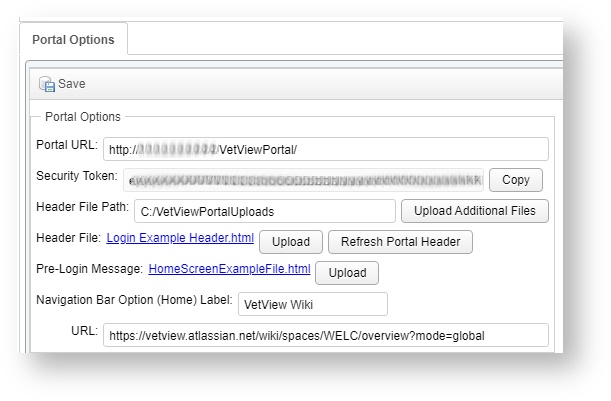
| Field | Description |
|---|---|
| Portal URL | The IP address or DNS location of the server where the VetView portal will be installed. Be sure that this website is visible and available through your organization's firewall. |
| Security Token | The token key that must be passed back and forth between the installation of VetView Portal and the main application. Without this key, queries from the Portal and other API commands will fail. |
| Header File Path | The location on the Portal server where any files for the Portal header should be stored. When the individual pages on the Portal load, they will go to this location for their image files and other files automatically. |
| Header File | An HTML file defining the look and feel of the header of the Portal. You can use this to define the CSS of the page, add your university's logo, and otherwise modify the feel of the portal. |
| Pre-Login Message | The file that should display when a user first logs into the portal. This is different from the header file, which will appear on all the pages of the portal. The Pre-Login Message is only on page prior to the user logging in. |
| Navigation Bar Option Label | VetView allows you to include a custom link on the header to any other location you specify. Use this section to add a link back to your university's main hospital or lab website, or a custom help file. |
Registration Instructions
This section allows you to enter in the information for registration that will appear in the login page.
Suggestions for this text block include how to know which Lab they should register, or where to find their Client Account Number on an invoice.
Additional instructions for each Lab and for the Hospital can be put on the Portal Setup for those labs and the hospital, under the Lab Setup and Hospital Setup Portal tabs.
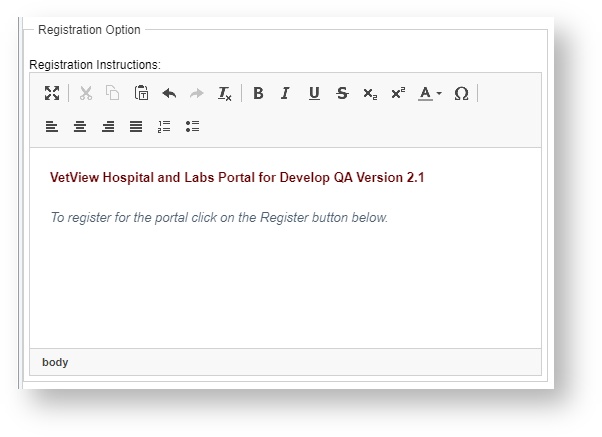
Portal Password Options
This section allows you to specify the structure of the passwords your Portal users will have to use to comply with your organization's security requirements. Web passwords in VetView are stored as a salted hash in the database for security reasons (not plain text.) Your organization may also have requirements about the length and any special characters.
These requirements are enforced on initial passwords creation, as well as the password reset.
Contact your organization's IT services team with questions about these requirements.
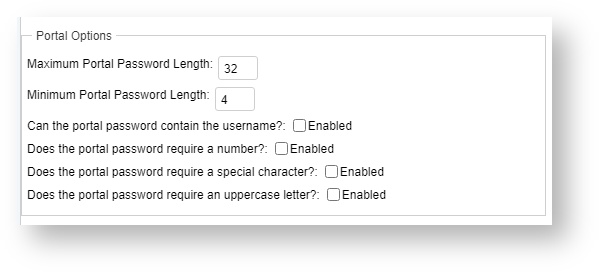
Portal Email Options
You can define a specific mail address that email communications from the Portal will be sent from on this section. We recommend having an email address that can be replied to and is monitored, or else including a message to not reply within the email body.
Registration Email Settings
VetView's email supports basic rich text editing for formatting, and includes a macro selector to input Placeholders that draw in matching data from the client's accounts.
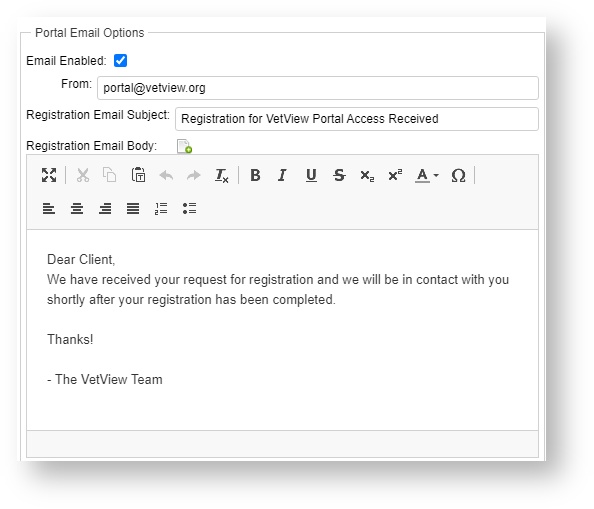
Password Reset Email Settings
This is the email that will be sent if a user requests a password reset.
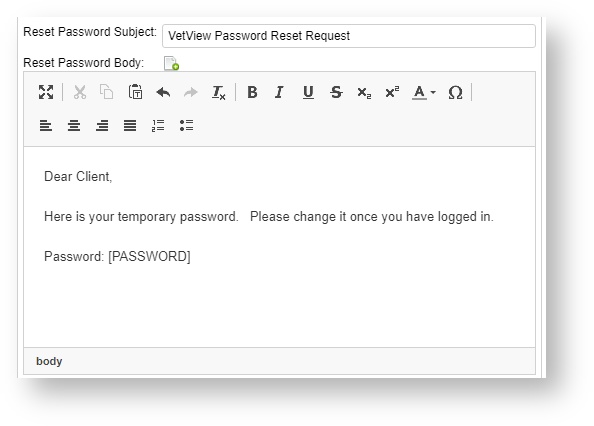
Lost Username Email Settings
This is the email that will be sent if a user cannot remember the username associated with their email account.
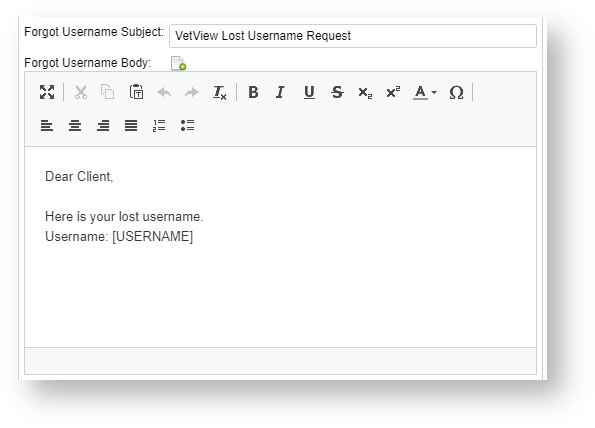
VetView Wiki Most recent releases of VetView: Version 4.2.5 Hotfix (Released 10/31/2024)
To see commonly used terms in VetView Hospital, please visit our Hospital Glossary of Terms.